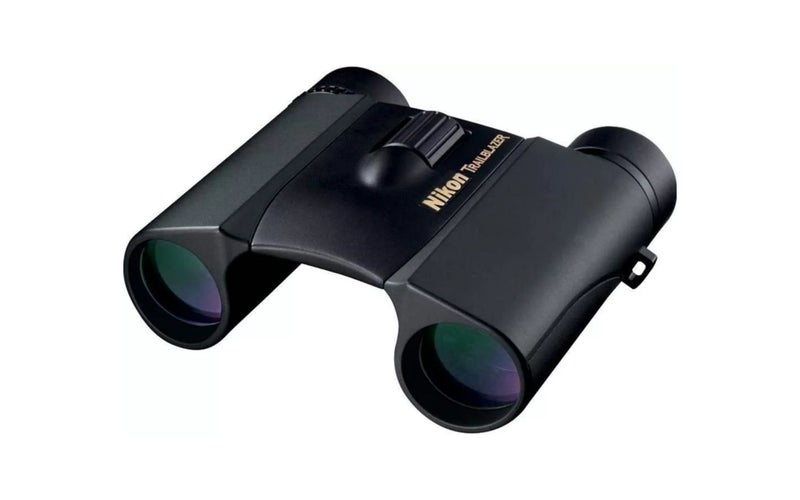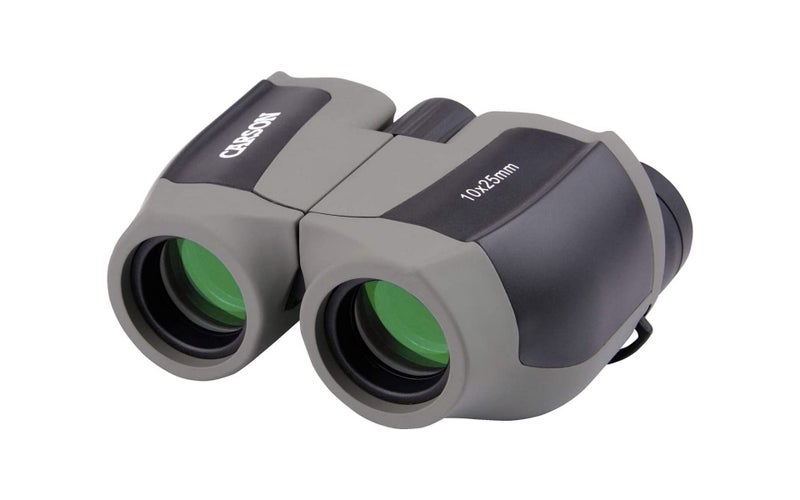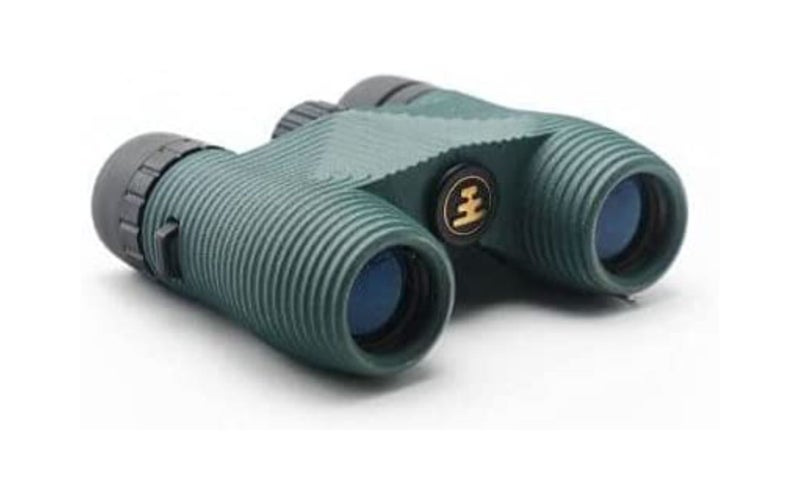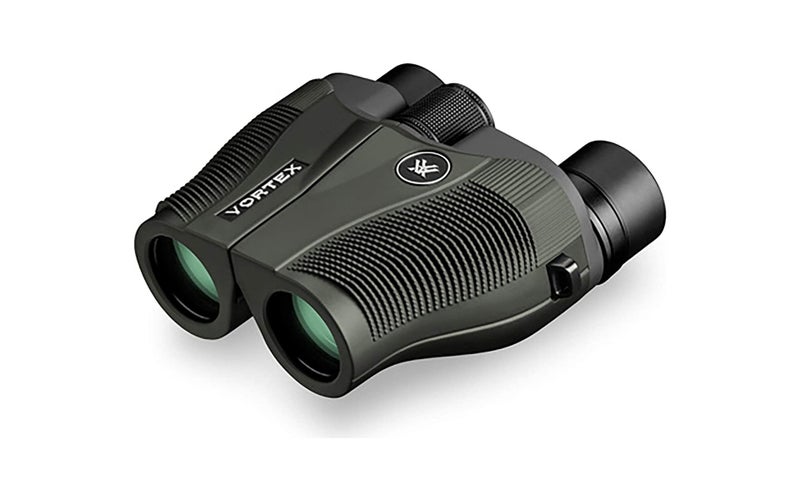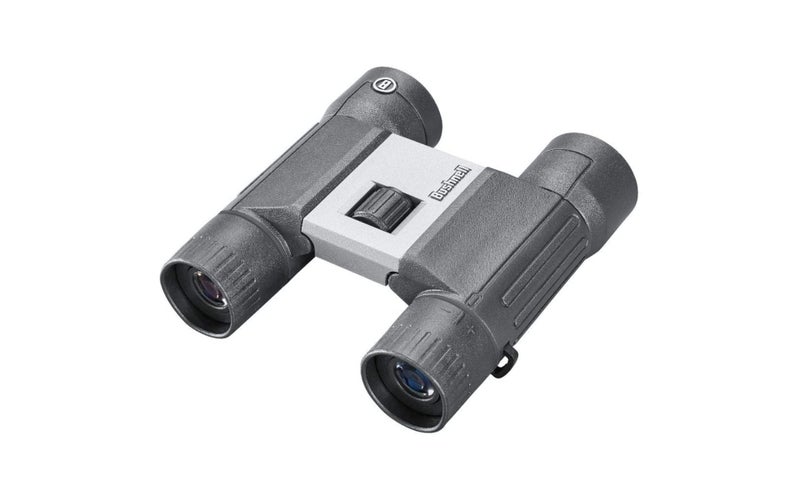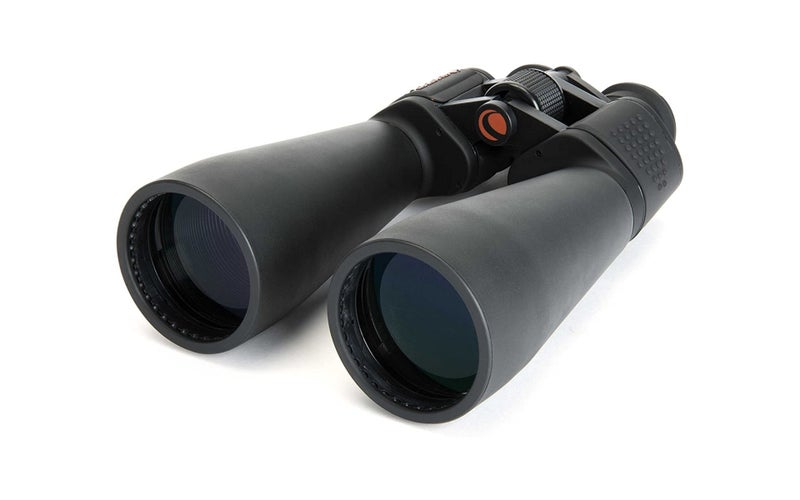The best binoculars under $100 for gazing on a budget
Adoring the sights from a distance doesn’t have to be a costly affair.
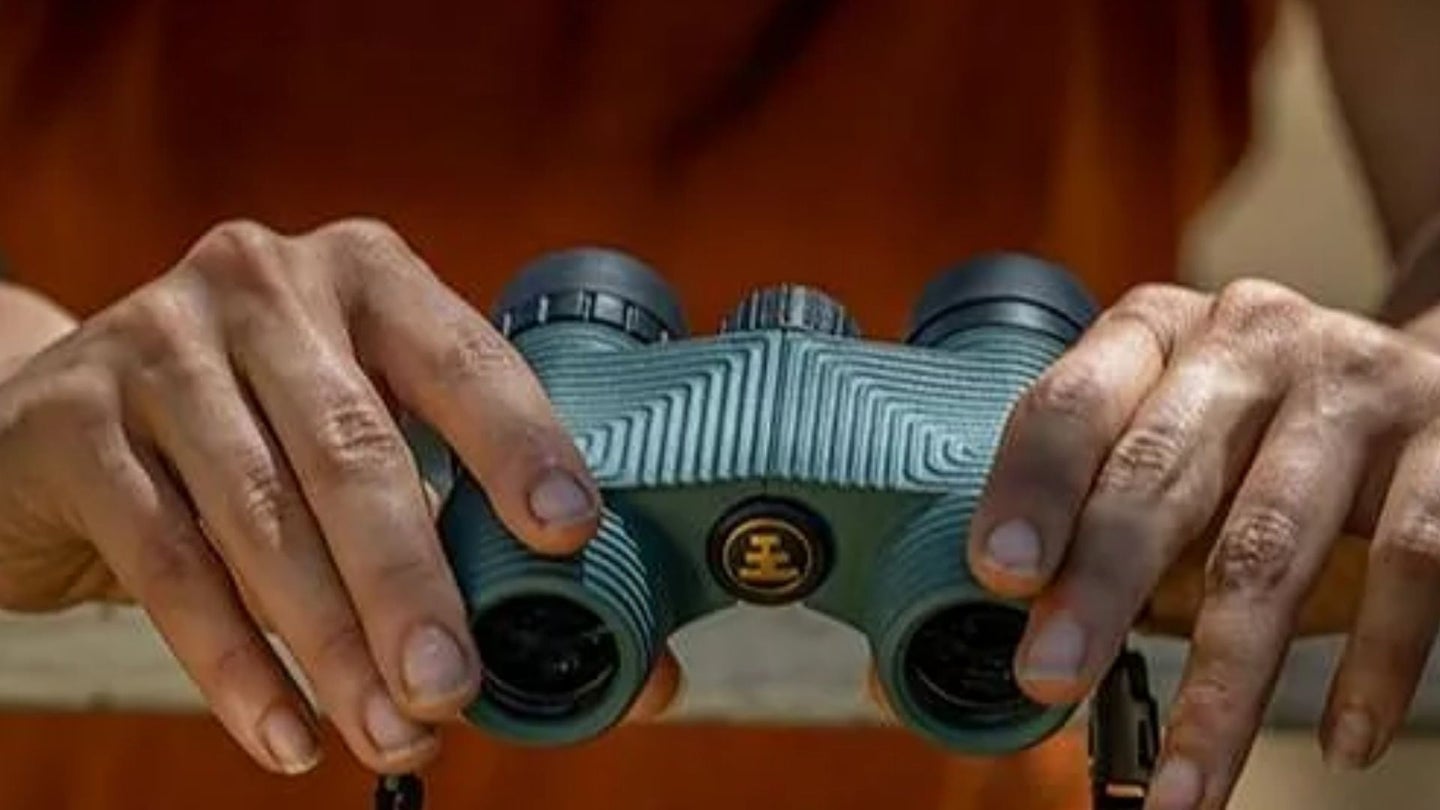
We may earn revenue from the products available on this page and participate in affiliate programs.
A great pair of binoculars will help you absorb our infinite escape from the hassles of everyday life. Of course, I’m talking about nature. Whether you’re a hunter, wildlife ranger, or merely a casual enthusiast who enjoys the fresh air and encapsulating vistas, anyone can reap the benefits of some quality sight glasses. That said, they can get quite lofty in terms of price, and it can be a headache to snag a decent pair at the right price. That’s no problem for Task & Purpose, so allow us to lend a helping hand.
Welcome to our buyer’s guide to the best binoculars for less than $100. We’ve got you covered, from leviathan-sized star gazers to rugged companions for hunting and everything in between. Whatever outdoor pastime floats your boat, there’s a product for you here. So scroll on through, happy shopping, and check out what we’ve found to be the best binoculars for the money.
- Best Overall: Nikon Trailblazer ATB
- Best Value: Carson ScoutPlus
- Honorable Mention: Nocs Provisions Standard Issue
- Best for Hunting: Vortex Optics Vanquish Reserve
- Best for Birdwatching: Bushnell PowerView 2
- Best for Astronomy: Celestron SkyMaster
Besides highlighting that Nikon makes more than top-notch cameras, the Trailblazer ATB showcases its best work for the least amount of dough. The compact design makes carrying a breeze, and it’s proven to be fog-proof, waterproof, and shock-resistant. Marketed as mere hiking binoculars, hunters and wildlife observers have carved new niches for it, with the latter demographic praising its surprisingly sharp, vivid imagery for an affordable, compact product. Kudos must be given to Nikon’s extensive use of lens coatings to minimize glare while allowing for maximum light collection through the 25-millimeter objective lens.
Easily one of the most acclaimed products in this guide, the few caveats boil down to the compact size. Some have found its size and weight to be a little tricky to stabilize despite not having the strongest magnification, so shaky imagery has been reported. In even fewer cases, larger individuals may also find the eyepieces too close together without enough adjustment for a comfortable viewing experience.
- Magnification: 10×25
- Eye relief: 10 millimeters
- Materials: plastic, rubber
- Weight: 9.9 ounces
Super compact for easy carrying
Sharp, high-quality view suits a variety of activities
Rubberized “armor” protects and improves shock absorption
Fog- and water-proof
View can get shaky
A pleasant surprise for a stellar deal, the Carson ScoutPlus is one hell of a bargain at $40 off Amazon, less than half the cost of the Nikon Trailblazer ATB or Nocs Provisions Standard Issue. Better yet, smaller variants exist for even less money, as low as $33 for the MiniScout. With near-identical specs as its pricer peers, it puts up a convincing act as general-use binoculars at home on trails or wildlife reserves. It’s similarly compact for effortless traveling, as most consumers do with this product, and 10x magnification still affords buyers with distant viewing experiences. Buyers have mostly found these viable options for watching over wildlife, but one found an interesting use for observing architecture and art.
It’s a commendable product of decent quality, but there’s no hiding that the ScoutPlus’ price is a reflection of its shortcomings versus more expensive binoculars. There’s seemingly no recorded feedback on its durability and performance in harsh conditions, and no claims to waterproofing, fog-proofing, or shock resistance. A small number of users have found them to be somewhat tricky to use comfortably, with reports of slightly distorted and vignetted views that they couldn’t correct.
- Magnification: 10×25
- Eye relief: 9.5 millimeters
- Materials: N/A
- Weight: 9.9 ounces
Bargain price undercuts many rivals by tens of dollars
Even more affordable variants exist
Another compact companion for easy traveling
Capable enough for a variety of activities
Somewhat distorted, less clear view than pricier options
Not the most accommodating eye relief for eyeglass wearers
Unproven ruggedness
The Nocs Provisions Standard Issue is a compelling bid to deliver rugged, high-quality optics in a configurable and aesthetically-pleasing package. Another acclaimed favorite on this list, the Standard Issue sports near-identical specs to the Nikon Trailblazer ATB, albeit with the ability to choose between 8×25 and 10×25 magnification. The rubberized exterior adds extra shock absorption to the binoculars’ body, while its texture aids in providing a rock-solid grip. In addition to fog-proofing, this product is rated to withstand a meter of water for up to 30 minutes. The cherry on top is the ability to choose from a lively palette of colors for a product that’s truly for you.
Nitpicks were few and far between, although I must disclose that this product does bump up at the edge of the $100 price limit. Additionally, the added eye relief will surely benefit some eyeglass wearers, but a few still claim that it’s not quite enough.
- Magnification: 8×25, 10×25
- Eye relief: 13 millimeters
- Materials: plastic, rubber
- Weight: 11.8 ounces
A literal rainbow of customization
Textured rubber exterior for a solid grip
Fog- and water-proof
Your choice of two magnification levels
Flirting with that three-figure price cap
Improved eye relief may still not be enough for glasses
Born from a company renowned for making quality binoculars and rifle scopes, the Vortex Optics Vanquish Reserve slots in as its budget-oriented binoculars for excursions far off the beaten path. Similar to the Nocs Provisions Standard Issue, this product is fog-proofed and waterproofed and offers a choice of two magnification levels. Slightly wider objective lenses (26 millimeters versus 25 millimeters) should lend themselves nicely to creating a somewhat more vivid picture. Aluminum construction far exceeds the strength and robustness of plastic competitors, and a lifetime warranty will keep you covered should you somehow prove that claim otherwise.
Consumers regularly praise the crisp, high-quality view, devoid of glare. A few others, however, still point out a slightly darker image than desired and general image quality that can’t match rivals just on the other side of the price border. For the given price range, these are still great binoculars for the money, even if it does edge close to the far end of the price scale.
- Magnification: 8×26, 10×26
- Eye relief: 15 to16 millimeters
- Materials: aluminum
- Weight: 12.7 ounces
Excellent image clarity for compact binoculars
Fog- and water-proofed
Your choice of two magnification levels
Metal construction bolsters resiliency
Bumps against triple-digit price cap, 10x magnification costs more
Image may display a tad darker than competitors
The Bushnell PowerView 2 ditches the previous compact entries on our list behind in the pursuit of bright, vivid imagery at great distances. It doesn’t abandon the ruggedness of its peers, either. An aluminum chassis multiplies its strength while the rubberized exterior enhances shock absorption as well as your grip. Magnification is stronger than its compact peers, and a 50-millimeter objective lens guarantees sharper image quality, which is preferred for observing wildlife. Oh, and did I mention that these are $65 at most? With the lower magnification level right at $60, this product is closer in price to our Best Value, Carson ScoutPlus, than it is to our Best Overall.
Exercise caution when springing for the PowerView 2’s higher magnification option, as it will be harder to stabilize and narrow the field of view, making it trickier to sight in on the desired object. The binoculars themselves may be a smidge too large for some smaller adults and children who have noted that their eyes may be too narrow to get a comfortable view. On the topic of comfort, eyeglass wearers should consider trying one out before splurging, as the seven-millimeter eye relief cuts it pretty close.
- Magnification: 10×50, 12×50
- Eye relief: 7 millimeters
- Materials: aluminum, rubber
- Weight: 28.6 ounces
Massive objective lenses for sharper views at long distances
Strong price point far beneath competitors
Metal construction bolsters resiliency
Your choice of two magnification levels
In-your-face eye relief strongly discourages eyeglasses
May be too large for smaller individuals or children
Larger magnification may hinder field of view
The Celestron SkyMaster — such an epic name, by the way— is a purpose-built tool for budding astronomers and is one of the most powerful binoculars in the price bracket. The 25x magnification with a gargantuan 70-millimeter objective lens rivals some entry-level telescopes and has proven itself as a top-notch choice for stargazing on a budget. Image quality is appreciably sharp with enough quality and zoom to view distant moons and planets, as this consumer has done. These are also sold as package deals, with each SkyMaster coming complete with a carrying case, tripod adapter, and rain guard, among other bits and bobs.
However, it should go without saying that such a focused product will have far more caveats. The largest elephant in the room is that it’s incredibly cumbersome to stabilize by hand due to the intense magnification as well as its weight, the heaviest on this list. Also stemming from its magnification is its narrow field of view which takes a well-versed hand to wield across the night sky.
- Magnification: 25×70
- Eye relief: 13 millimeters
- Materials: plastic
- Weight: 52.0 ounces
Bright, crisp image clarity
Perfectly-tailored optics for entry-level astronomers
Lots of extra goodies included
Intense magnification makes for difficult stabilization by hand
Narrow field of view makes pinpointing objects tricky
Things to consider before buying binoculars under $100
Eye relief
How far should you place your eyes from the binoculars? Products with shorter eye relief will require you to look closer into the eyepiece lenses, while more extended eye relief will have you gaze from farther away. Trying to look into the binoculars while outside the recommended eye relief may result in an image that’s distorted or vignetted. Those with eyeglasses are recommended to search for binoculars with longer eye reliefs or, better yet, those with adjustable eyecups to tweak the eye relief to better suit you.
Magnification
You guessed it. How far can the seeing glass see? Although most binoculars in this price bracket typically offer anywhere between eight to 12x magnification, your specific needs will determine the magnification level best suited for you.
Skygazers and casual astronomers will need heavier firepower, and specialized binoculars may offer 15x, 20x, or even 50x magnification. The strongest ones will even rival some telescopes. Conversely, hikers and hunters may not need that much magnification and may only be looking beyond a nearby ridge or across a field. Many hunting or general outdoor binoculars will offer approximately 10x magnification.
Objective lens sizing
This is the measurement of those outer lenses you peer out of, the sizing of which will help determine the brightness and clarity of the image. Smaller objective lenses are commonplace in compact binoculars and many entry-level products. Plenty of hunting or hiking binoculars will use smaller sizes to ease concealment and lessen the likelihood of bumping them on a rifle or a rock. Their view may not be the sharpest, but high-quality binoculars from top-notch brands can still deliver an exceptional image. Binoculars for distant wildlife observation, low-light exploring, or astronomy will conversely sport huge lenses to capture as much light as possible, allowing for a crisp, vivid look at the object in question.
FAQs about binoculars
Q. How much do affordable binoculars cost?
A. All the products listed plus many more can be had for less than three figures. Many robust, high-quality products from big brands occupy the $80 to $99 range, with most mid-grade examples sitting between $60 and $70. Our Best Value-winning Carson ScoutPlus comes in at a friendly $40.
Q. Can I wear my eyeglasses with binoculars?
A. Definitely, but wearing eyeglasses may inhibit your view depending on the eye relief. Find a product that allows you to get a clear look at the captured image without placing your face too far or smashing it against your glasses. Some have adjustable eyecups to fit perfectly with you
Q. How do I select the appropriate binoculars for my hobbies?
A. Admittedly, most binoculars can function as general-use, jack-of-all-trades products, but particular preferences in sizing and optics can improve their performance in certain fields. Intense magnification is great for stargazing, while massive lenses create bright, crisp images for dim environments or wildlife observation. Hunters and hikers will benefit from compact, durable, waterproof sight pieces.
Final thoughts
Nikon’s Trailblazer ATB is a sturdy, reliable pick with performance that’s equally at home on the hunt as it is on a leisurely nature walk. The Nocs Provisions Standard Issue delivers a near-mirroring experience in a more customizable package for just a bit more coin. And down at the bottom of the price bracket, the budget-friendly Carson ScoutPlus does an admirable impression of its pricier companions without forsaking ruggedness or quality.
Methodology
This guide is primarily research-based and has been curated through the extensive digging of manufacturer specs and, most importantly, customer feedback. The best overall products were the most well-rounded and well-received binoculars with both commendable build quality and exceptional reliability for the money. The best products of specific niches would have a sharper focus on their given task and deliver solid performance for the price range. Binoculars with minimal specs or little-to-no consumer input were often ignored.
While Amazon continued to serve as a primary hub of information, the internet is overflowing with similarly resourceful places. As such, I also extend thanks to REI, Cabela’s, and numerous manufacturer websites for their caches of information.
As always, readers are always welcome to learn more about how Task & Purpose generally curates its buyer’s guides.
